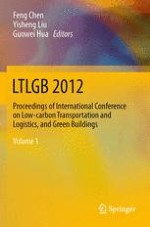2013 | OriginalPaper | Chapter
26. A Model to Evaluate the Modal Shift Potential of Subsidy Policy in Favor of Sea-Rail Intermodal Transport
Activate our intelligent search to find suitable subject content or patents.
Select sections of text to find matching patents with Artificial Intelligence. powered by
Select sections of text to find additional relevant content using AI-assisted search. powered by
